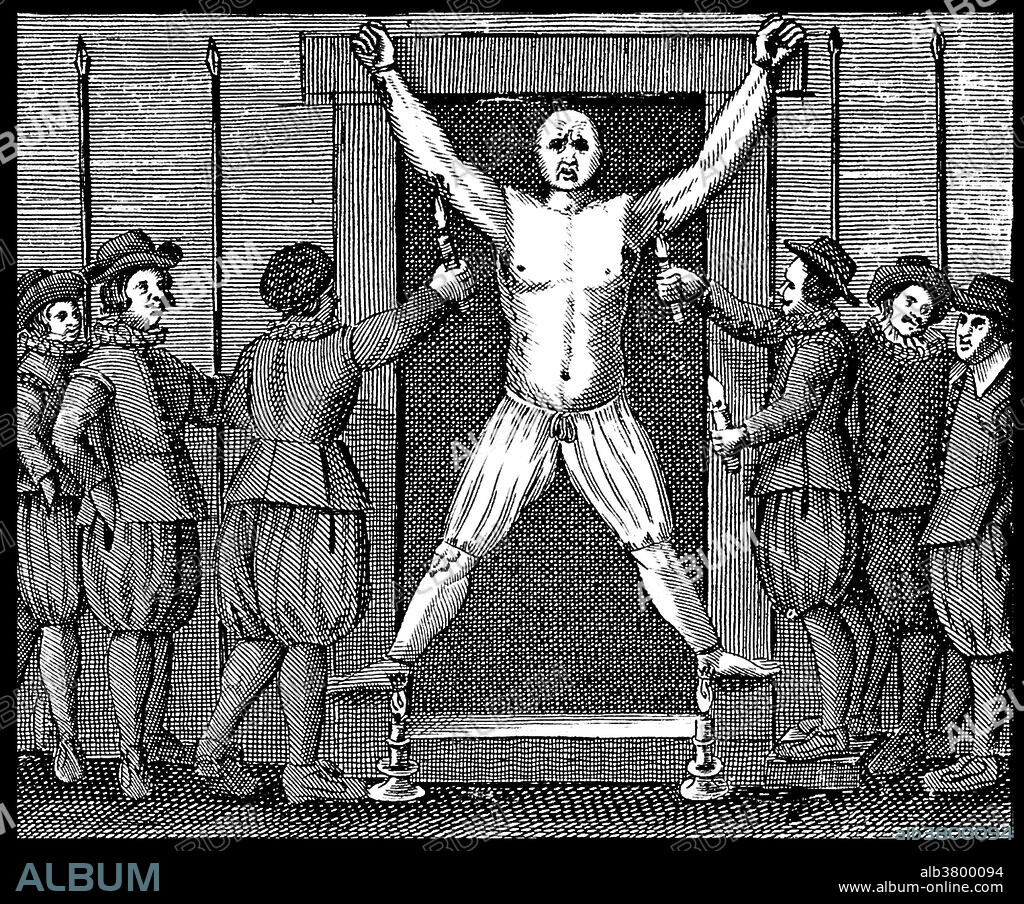alb3800094
Torture, Burning of the Flesh

|
Add to another lightbox |
|
Add to another lightbox |



Title:
Torture, Burning of the Flesh
Caption:
A man tied to a rack has his armpits and the soles of his feet scorched by candles. Medieval and early modern European courts used torture, depending on the crime of the accused and his or her social status. Torture was deemed a legitimate means to extract confessions or other information about a crime, although many confessions were greatly invalid due to the victim being forced to confess under great agony and pressure. It was permitted by law only if there was already half-proof against the accused. Torture was used in continental Europe to obtain corroborating evidence in the form of a confession when other evidence already existed. Often, defendants already sentenced to death would be tortured to force them to disclose the names of accomplices. Torture in the Medieval Inquisition began in 1252 with a papal bull Ad Extirpanda and ended in 1816 when another papal bull forbade its use. Torture was usually conducted in secret, in underground dungeons. By contrast, torturous executions were typically public. Tortures later in the Middle Ages consisted of whipping; the crushing of thumbs, feet, legs, and heads in iron presses; burning the flesh; and tearing out teeth, fingernails, and toenails with red-hot iron forceps. Limb-smashing and drowning were also popular.
Credit:
Album / Science Source / Wellcome Images
Releases:
Model: No - Property: No
Rights questions?
Rights questions?
Image size:
4050 x 3365 px | 39.0 MB
Print size:
34.3 x 28.5 cm | 13.5 x 11.2 in (300 dpi)
Keywords:
ARMPITS • ART • ARTWORK • BURN • BURNING OF THE FLESH • BURNING • BW • CANDLES • CRIMINAL JUSTICE • CRUEL • CRUELTY • DRAWING • ETCHING • FEET • FLAME • FRENCH • HISTORIC • HISTORICAL • HISTORY • ILLUSTRATION • ILLUSTRATIONS • INFAMOUS • INHUMANE • INHUMANITY • INTERROGATE • INTERROGATION • JUSTICE SYSTEM • LEGAL SYSTEM • LEGAL • MEN • PAIN • PENAL SYSTEM • PEOPLE • PERSECUTE • PERSECUTING • PERSECUTION • PHYSICAL PAIN • PRISONER • PUNISH • PUNISHING • PUNISHMENT • PURSUIT • SCORCHED • SCORCHING • SUFFER • SUFFERING • TORMENT • TORMENTING • TORTURE METHOD • TORTURE • TORTURER • TORTURING • VICTIM • VICTIMS
 Pinterest
Pinterest Twitter
Twitter Facebook
Facebook Copy link
Copy link Email
Email

